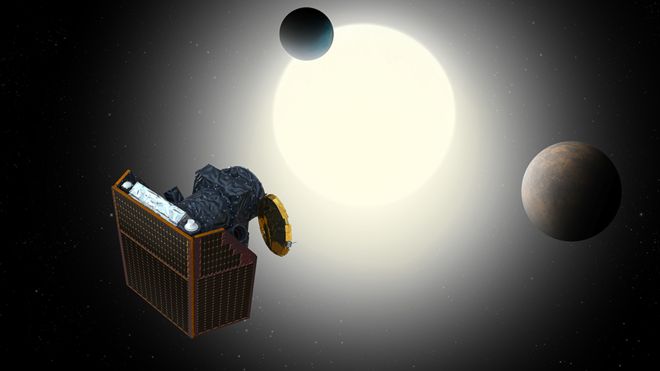Europe’s newest space telescope, CHEOPS, has completed its testing period and is ready to help us peer into distant worlds.

Image credits ESA.
CHEOPS, or the CHaracterising ExOPlanet Satellite is the European Space Agency’s (ESA) newest tool in the sky. It was launched in December with the aim of studying exoplanets, with early targets including the so-called “Styrofoam world” Kelt-11b; the “lava planet” 55 Cancri-e; and the “evaporating planet” GJ-436b.
Swish precision
“We have a very stable satellite; the pointing is excellent — better than requirements. And this is going to be a real benefit to the mission,” said Dr Kate Isaak, lead scientist of the project behind CHEOPS at ESA for BBC News. “From the spacecraft side, from the instrument side, from the analysis of the data that we’re getting — we can see that this mission has huge promise.”
CHEOPS will take a closer look at points of interest identified in previous surveys of the sky, in the hope of improving our understanding of what these objects actually are. While the coronavirus crisis has meant considerable disruption for many space projects, CHEOPS has been largely unaffected.
The satellite is a joint project between the Swiss Space Office and ESA. It is “a small photometric observatory” that will observe and measure the transits of exoplanets as they pass in front of their stars — allowing us to better estimate their size. Combined with data about their mass obtained from other devices, such measurements would allow researchers to estimate the planets’ densities and from that, their chemical composition and internal structure.
Prof David Ehrenreich from the University of Geneva, which participated in the project, said a few early observations made with CHEOPS would be of “super-Earths” such as 55 Cancri-e. This planet is eight times as massive as Earth but has 18-hour-long days. Due to its size and proximity to its star, researchers suspect that 55 Cancri-e harbors an ocean — an ocean of molten, liquid rock.
“These are planets that are assumed to be rocky like Earth – but much bigger, more massive. And much hotter, too. Lava worlds,” he explained.
Roughly 80% of observing time on CHEOPS has been earmarked for participants in the project, including the ESA, universities in Bern and Geneva, and other members in eleven European nations. The remaining 20% is being offered to the community at large, with proposals to be reviewed in the coming days.
“We have built a whole theory of planet formation by observing only the eight planets of our Solar System, but by extending our observations to other kinds of planets that have no counterpart in our Solar System,” Prof. Didier Queloz told the BBC — a professor from the universities of Cambridge and Geneva, and a Nobel Prize Laureate.
“We should be able to add the missing parts of this theory and get, let’s say, a bigger perspective on how we actually fit in.”
Science planning for CHEOPS is run from Geneva; the telescope itself is controlled from Spain, at the National Institute for Aerospace Technology in Torrejon on the outskirts of Madrid.


